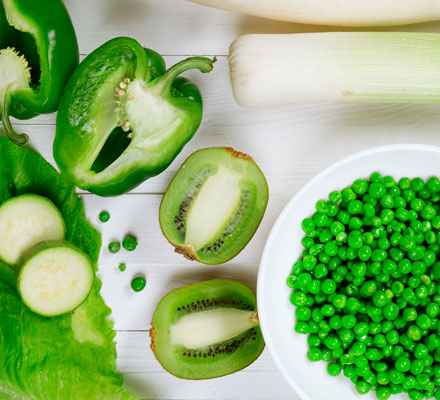Your complete guide to what, how and when to eat, to prevent the onset of this increasingly prevalent lifestyle condition. The fact that recent years have seen a rapid rise in Type 2 diabetes across all age groups, right around the globe, isn’t exactly breaking news. Indeed, the Diabetes Atlas from International Diabetes Federation (IDF) …

Your complete guide to what, how and when to eat, to prevent the onset of this increasingly prevalent lifestyle condition.
The fact that recent years have seen a rapid rise in Type 2 diabetes across all age groups, right around the globe, isn’t exactly breaking news. Indeed, the Diabetes Atlas from International Diabetes Federation (IDF) published in November 2013 suggests that 382 million people worldwide, are living with diabetes. But what needs to make the headlines is – what can we do to curb this alarming statistic?
The issue is particularly pressing in this region – according to IDF research, 18.98 per cent of the UAE population is living with diabetes. As a nation, this ranks the UAE 15th worldwide, with many neighbouring countries in the top ten. These statistics indicate that the region has high risk factors for diabetes, pointing mainly to rising obesity rates and physical inactivity. This Diabetes Awareness month, we look at the dietary dos and don’ts you need to follow, as well as offer lifestyle tips from the experts to ensure you don’t become just another statistic!
WHAT IS DIABETES?
Diabetes is a long-term condition that causes high blood sugar levels because the body is not producing enough insulin or is not able to use insulin properly. Insulin is a hormone secreted by the pancreas, and without insulin the body cannot use sugar in the correct way.
There are two main types of diabetes:
• Type 2 diabetes is mainly caused by an unhealthy, inactive lifestyle and excess weight gain. In this type of diabetes, there is insulin in the body, but the body becomes resistant to it so the insulin becomes largely ineffective. Traditionally, type 2 diabetes is referred to as adult-onset diabetes, but in recent years, with diabetes reaching epidemic levels, children as young as seven are developing the condition. This is essentially a lifestyle condition that can be prevented.
Up to 58% of type 2 diabetes is preventable by adopting a balanced diet and increasing physical activity.
More or Less
Eat more
• Fibre: Include more foods that are high in fibre like whole-grain bread, oats, lentils, beans, peas, fresh fruits and vegetables.
• Fruit & veg: Eat a rainbow of colours, as each fruit or vegetable colour holds a different health benefit. Choose red, orange and dark green leafy vegetables, such as tomatoes, sweet potatoes and broccoli in your main dishes and snacks.
Eat Less
• Fat: Avoid fried food, saturated fats such as butter, ghee, and mayonnaise, and choose lower-fat options such as skinless chicken, lean meats and trim fats on meat.
• Sugar: Limit your intake of ‘sugary’ foods like cakes, cookies, honey, sugar, and regular soft drinks.
• Salt: Reduce ‘salty’ foods like processed cheeses and meat, avoid adding salt while cooking and do not add salt direct from the shaker – rather use a spoon so you can see exactly how much you are adding.
1 portion of fruits or vegetables equals:
TIPS FOR HEALTHIER COOKING
Gen up on GI
The Glycemic Index (GI) is a tool that ranks carbohydrate-containing foods according to their effect on blood glucose levels. High GI foods are quickly absorbed by your body and raise your blood sugar levels rapidly. Whereas, low GI foods are slowly absorbed by your body and raise your blood sugar levels gradually – which is better for preventing imbalance of sugar levels and lowering diabetes risk.
SMART SHORTCUTS
– Add tofu, bulgur, or brown rice to casseroles and cut down on the amount of meat.
– Use smaller amounts of stronger cheeses, instead of more mild cheese to decrease quantity without sacrificing on flavour.
– Chill a soup or stew to bring the fat to the top for easy removal before re-heating and enjoying.
Build your plate
Portion control is an important part of healthy eating, successful weight loss and weight management. An easy way to make sure you’re eating the right amount is called the ‘plate’ method: Fill ½ your plate with non-starchy vegetables, like spinach, carrots, lettuce, greens, cabbage, broccoli, cauliflower, tomatoes; Fill ¼ of your plate with low GI starches, like rice, ‘al dente’ pasta, fibre-rich cereals; Fill ¼ of your plate with lean meat or non-meat protein, like fish, chicken, meat, eggs. The remaining wedge is for healthy fats, such as olive oil, avocados, nuts and seeds. 1 serving of fruit and 1 cup of low-fat milk may accompany your meal.
Remember! Most plates are 12 inches wide, but the plate method uses a 9-inch plate. This means you need to leave space around the outside of your 12-inch plate to make sure you’re not eating too much.
Reduce the risk
Just 10 minutes of moderate-intensity physical activity three or more times a day together with a balanced diet can result in the prevention, management and even reversal of diabetes. A healthy diet and a brisk walk for 30 minutes every day has been shown to reduce the risk of type 2 diabetes by up to 58 per cent.
Did You Know?
Almost 50 per cent of people living with diabetes are not aware of their condition.
GET INVOLVED
Here’s how you can do your bit for diabetes awareness this month:
Information courtesy Imperial College London Diabetes Centre, www.icldc.ae

